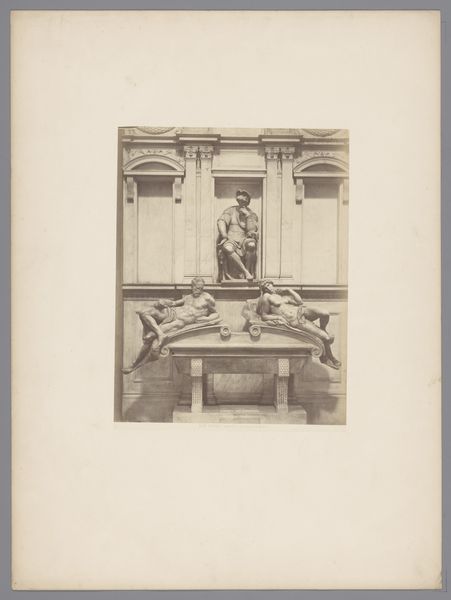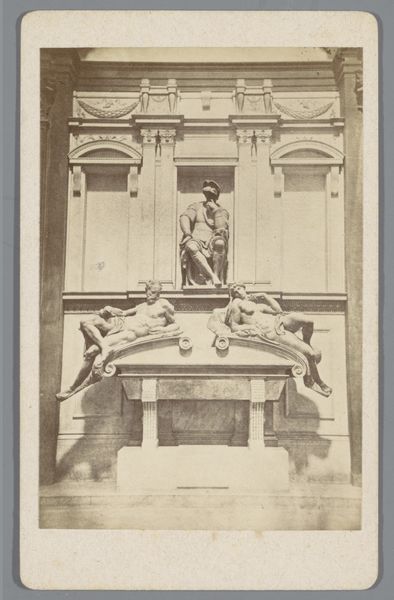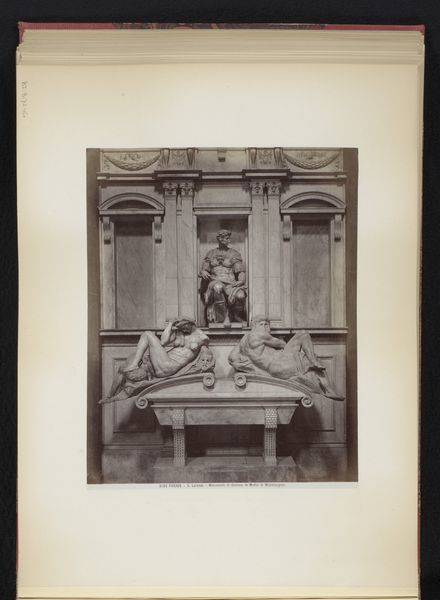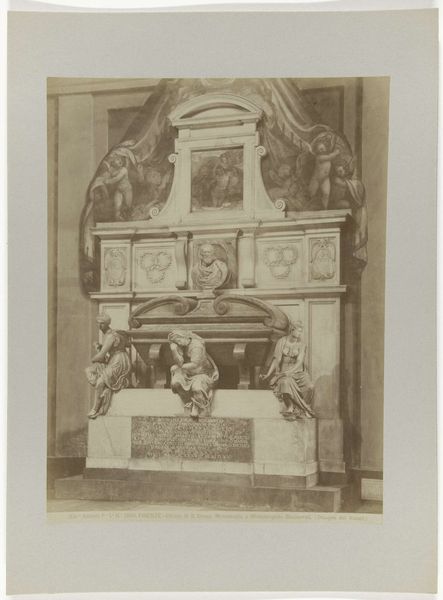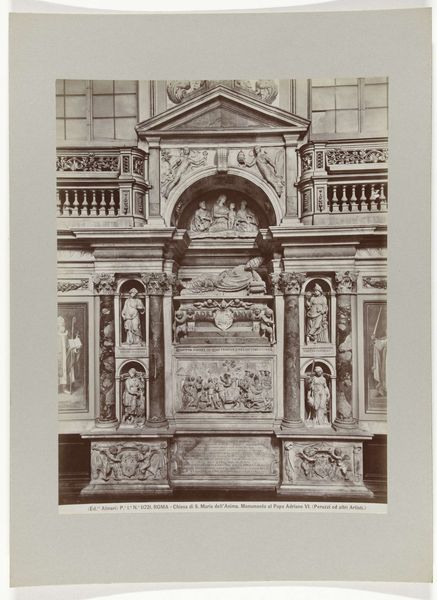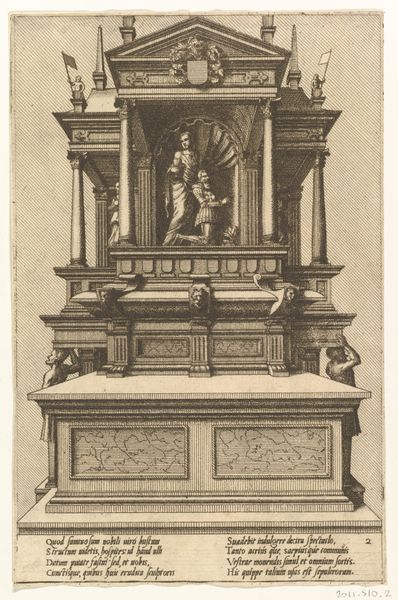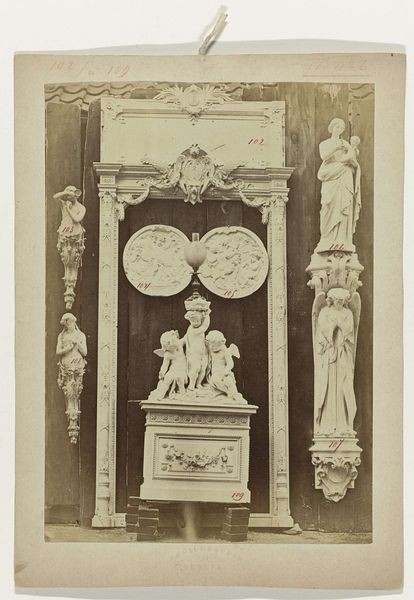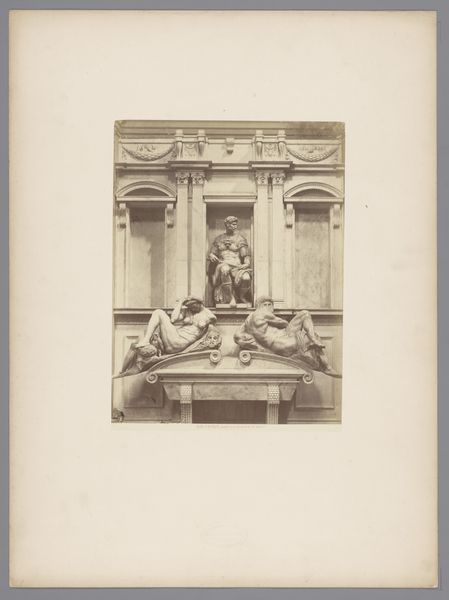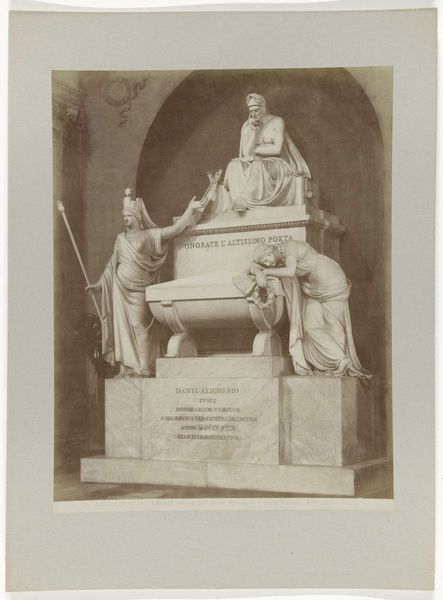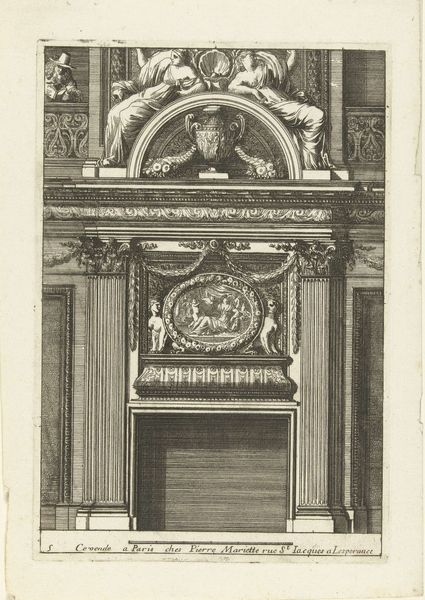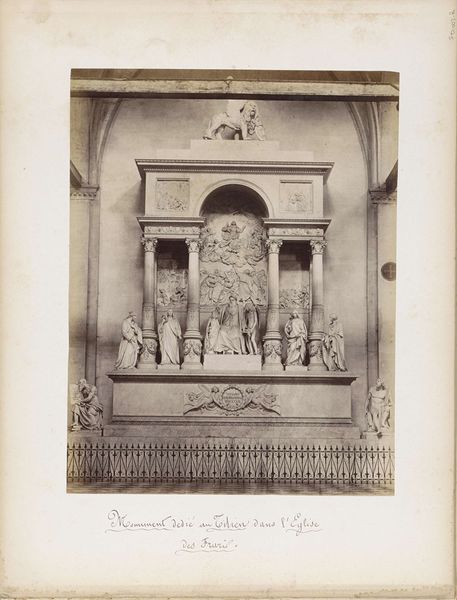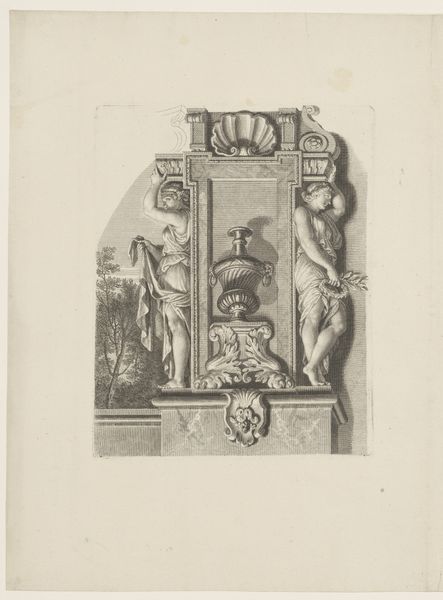
print, photography, sculpture, gelatin-silver-print, marble
#
portrait
# print
#
charcoal drawing
#
figuration
#
11_renaissance
#
photography
#
sculpture
#
gelatin-silver-print
#
charcoal
#
marble
Dimensions: height 258 mm, width 193 mm, height 328 mm, width 241 mm
Copyright: Rijks Museum: Open Domain
Curator: This image is a gelatin-silver print from between 1880 and 1895, credited to Fratelli Alinari. It captures the marble tomb of Lorenzo de' Medici. Editor: Wow. My first impression is a hushed stillness. It feels ancient and profoundly…composed, like a stage setting for the ultimate existential drama. Curator: Yes, there’s a certain theatricality. Think of the reclining figures representing Day and Night and then the seated statue of Lorenzo the Magnificent above, a portrait, frozen in perpetual thought. Editor: It feels as if time itself is sculpted here. Day and Night, eternally caught in their poses, suggesting a never-ending cycle. Do you feel how those reclining figures kind of echo each other? The mirroring emphasizes the relentless nature of passing time, each figure leaning wearily into their respective realms. Curator: Absolutely. Michelangelo masterfully used the human form to convey abstract concepts and emotions, and Alinari has done a spectacular job in rendering the marble and the emotions so clear and present. The image pulls classical symbolism—those reclining figures you noted—and links them to Renaissance humanism, where man’s contemplation shapes his destiny, represented here by Lorenzo. Editor: Destiny in marble, quite literally. Though, tell me, does the perfection, the classical harmony feel, I don’t know…a bit suffocating? Is that intentional do you think? Is it the perfection and timelessness, as you noted, or more that that’s precisely the kind of burden Renaissance figures like Lorenzo might have shouldered, striving always for glory and leaving a perfect mark on history. It almost has a melancholy mood. Curator: I see what you mean. Melancholy as legacy. This photograph almost acts as a historical mirror, doesn’t it? Alinari, capturing Michelangelo’s creation, provides another lens through which we perceive not just Renaissance grandeur but its quieter, contemplative shadows too. The material—photography—brings history into our present. Editor: It's amazing how a seemingly static image can open up so much contemplation of the Renaissance, power, legacy, and the burdens of genius. Definitely gives one pause. Curator: Indeed. It’s a potent blend of artistic genius memorializing a cultural legacy. Something to ponder on the way out, I think.
Comments
No comments
Be the first to comment and join the conversation on the ultimate creative platform.
